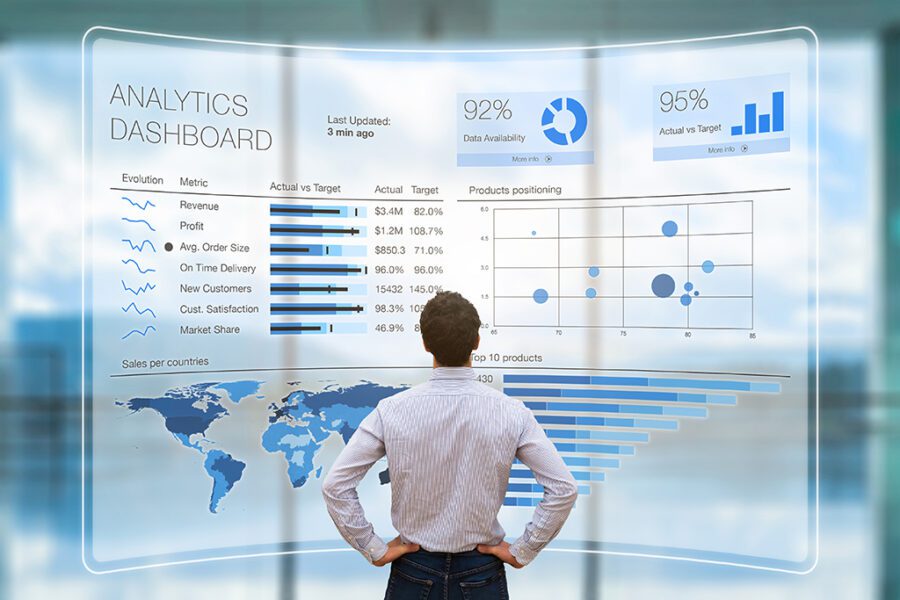Data is the biggest asset in modern business. It can help or ruin an organization. Power BI and Microsoft Fabric are powerful tools that businesses employ to make the most of data. These platforms are the foundation of business analytics, and when they are connected to Azure Data Factory become an unstoppable powerhouse.
Power BI is Your Business Intelligence Companion
Power BI, a product of Microsoft, is a powerful business intelligence tool that is designed to assist businesses in visualizing and share their insights from data. It allows users to create interactive dashboards and reports using raw data to create useful insight.

Whether you’re a small startup or a big company, Power BI adapts to your requirements. It integrates seamlessly with various sources of data and makes it easy to consolidate information from multiple platforms and databases. Its intuitive drag-and drop interface even non-technical users can quickly create meaningful reports and analyses.
Power BI’s platform provides real-time data processing. This ensures that you’re working with current information. Power BI offers a range of graphs and visualizations that allow you to present information in a clear, interesting way. Collaboration and sharing of reports with colleagues improves decision-making, and promotes a data driven business culture within your organization.
Microsoft Fabric The weaving of data Excel
Microsoft Fabric is the fundamental system that connects and orchestrates data across various Microsoft services. Fabric is the thread that ties your data into a unified functional entity that allows organizations to draw insights effortlessly.
Microsoft Fabric helps businesses maintain data integrity and consistency while they deal with increasing data volumes. Microsoft Fabric integrates an array of applications, including Azure Data Lake Storage (Azure SQL Data Warehouse), Power BI, and a host of others. The platform’s interconnectivity ensures data flow and insights coming from a variety of sources.
The flexibility of Microsoft Fabric is particularly evident in its capabilities to transform data. It is a great tool to organize data, cleanse and prepare it for analysis, and ensure it adheres to your organization’s data governance policies. Microsoft Fabric assures you that your data is correct as well as reliable and ready to be analyzed.
Azure Data Factory: The Gateway to Data Transformation
Azure Data Factory is another essential component in the modern business intelligence landscape. It’s a cloud-based data integration tool that allows you to create, schedule and manage data-driven processes. Through orchestrating data movement and transform data, Azure Data Factory paves the way for meaningful knowledge.
One of the strengths of Azure Data Factory is its flexibility in connecting to various data sources. Data can be integrated effortlessly, whether on-premises, cloud-based or both. It will provide you with the complete picture of your entire data environment regardless of where your data is. The platform is able to handle batch processing, real-time streams of data and big data analytics. This is why it is suitable for all kinds of use cases.
Azure Data Factory provides a visual interface to ease the process of creating data pipes. Even if you are not a professional coder It is simple to build, schedule and monitor data pipelines. It lets business users control their data integration process and lets them prepare data by themselves.
Power BI, Microsoft Fabric and Azure Data Factory: The Power Trio
If Power BI, Microsoft Fabric, and Azure Data Factory come together to form a dynamic trio that could revolutionize your data analytics activities. This is what they do:
1. Data Integration: Azure Data Factory connects to a multitude of data sources, making sure that the data you have is accessible. Microsoft Fabric orchestrates the data of various services with this data integration feature. This makes sure that the data you have structured, cleaned, and ready to be analysed in Power BI.
2. Data Transformation: Microsoft Fabric is a crucial component of data transform. It allows you to transform your data according to your preferences. Fabric is an effective tool to transform data cleaning, data cleansing and data processing.
3. Power BI will take over when your data has been refined and is ready to be used. It enables you to create visually appealing reports and dashboards that make complex data easier to comprehend. The insights you gain can be shared with your team to encourage data-driven decisions.
4. Scalability: Azure Data Factory can expand to handle growing amounts of data. The combination of Power BI with Microsoft Fabric will guarantee that your data will remain constant and reliable, even as your company grows.
5. Power BI and Azure Data Factory offer real-time insights, which can be crucial to make quick decisions.
The article’s conclusion is:
To stay competitive in the world of business intelligence companies need to utilize data effectively. Power BI combined with Microsoft Fabric and Azure Data Factory can take your business analytics to the next level. Whether you’re looking to create stunning visualizations, make sure you have accuracy of data, or streamline data workflows, this trio includes everything you need. Let your data shine through the use of business intelligence.